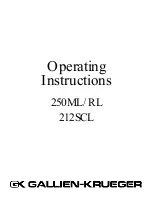
75
parameter send/receive options
These parameters determine whether the
Hydrasynth Explorer will transmit (TX) or receive
(RX) 7-bit MIDI CC’s or NRPNs during parameter
changes. This allows for more user-friendly
automation on DAWs that do not support the MIDI
NRPN standard.
The CC numbers for each control are listed in the
What’s a nrpn?
NRPN stands for Non-Registered Parameter
Number. It’s a way of allowing higher-
resolution control data to be sent and received.
Implementation is not standardized, so each
manufacturer uses different methods. The NRPN
implementation data for Hydrasynth Explorer is
available at
Send patch / all patches
These actions allow you to transmit the sys-ex
data of a patch or all patches to another
Hydrasynth model. Note that doing that over MIDI
requires two MIDI cables. Ideally both units would
be connected to the same computer via USB and
then patches and banks could flow freely between
the two.
The simplest, most elegant solution is to use our
free Hydrasynth Manager application
www.ashunsoundmachines.com/downloads)
. It
makes it easy to store your patches to a computer
and share them between two or more Hydrasynth
models.
MiDi: page 11
control parameter
range
Description
1
Overflow [1] Off, On
Connect two Hydrasynth models for extra polyphony
2
Arp TX [1][2] Off, On
Send Arp note on/off messages via MIDI / USB
3
Pgm Chg TX Off, On
Send MIDI Program Change upon patch selection
4
Pgm Chg RX Off, On
Receive MIDI Program Change commands
[1] The Arp TX setting has no effect when Overflow is set to On. Overflow must be set to Off to transmit
the arpeggiator notes.
[2] This also toggles the arpeggiator response to incoming MIDI/USB notes.
Overflow
Two Hydrasynth models can act like a single unit
using Overflow mode. We’ll assume you’re using
two 8-voice Hydrasynth Explorers for this example.
It’s simple: Connect a MIDI cable from the MIDI
Out of one unit (the “master”) to the MIDI In of
the other unit (the “slave”). Next, enable Overflow
for both units. Connect the audio outputs of each
unit to your sound system, set good levels for
each, and then:
1. Select a patch on the master: it is sent via
sys-ex and appears on the slave.
2. Play 9 notes on the master: the first 8 voices
come from the master; the ninth comes
from the slave.
Here are some other things to know about
Overflow mode:
• The two units will play the same sound. If
you want to layer different sounds, disable
Overflow mode.
• When a Mono or Unison patch is selected, the
voices on both units are stacked as a single
instrument.
arp Tx
Set this parameter to On if you want the
arpeggiator to transmit note on/off commands
over MIDI / USB. It also toggles the arpeggiator
response to incoming notes. See
for more info. Sync information is
sent whether Arp TX is On or Off.
pgm chg Tx / rx
These parameters determine whether the
Hydrasynth Explorer will transmit (TX) or receive
(RX) MIDI program change commands.
Содержание Polytouch HYDRASYNTH EXPLORER
Страница 2: ...OCTAVE MAX MIN ...












































